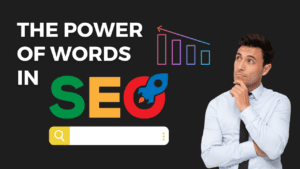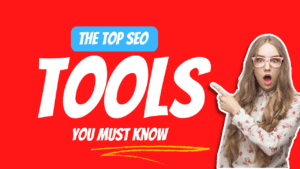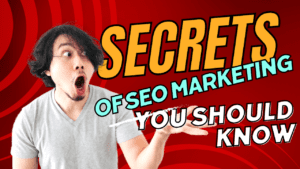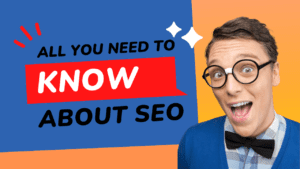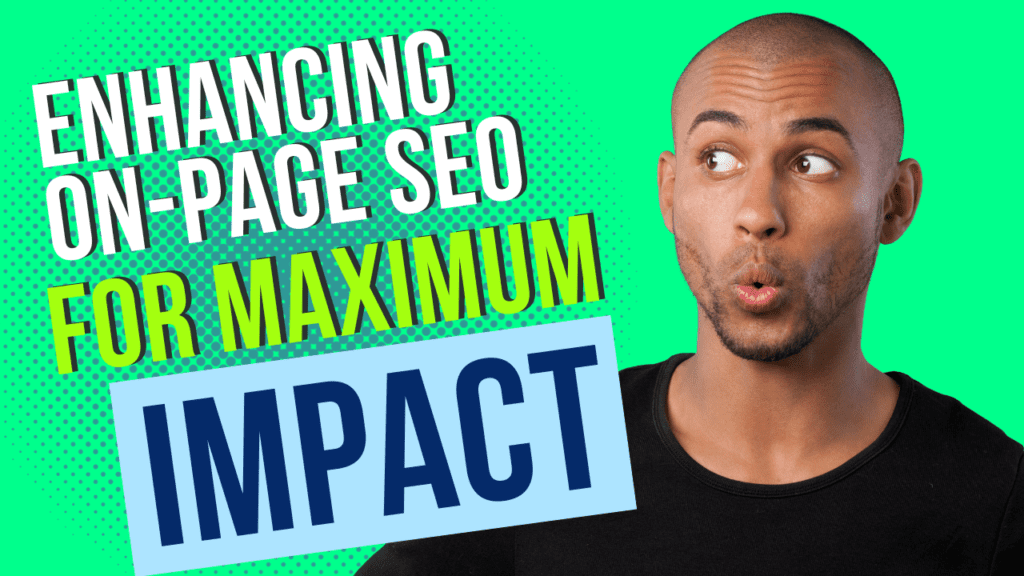I. Introduction to On-Page SEO
- The importance of On-Page SEO for website visibility and organic traffic
- How search engines evaluate and rank web pages
In today’s digital landscape, having a strong online presence is crucial for businesses seeking to reach their target audience. While off-page SEO techniques like backlink building and social media promotion are important, on-page SEO plays a critical role in boosting website visibility and driving organic traffic.
On-page SEO refers to the optimization of various elements within a web page to improve its search engine rankings. Search engines evaluate and rank web pages based on several factors, including relevance, user experience, and content quality.
II. Keyword Research: The Foundation of On-Page SEO
- Understanding the role of keywords in on-page optimization
- Best practices for conducting effective keyword research
- Tools and techniques to identify high-value keywords
Keywords are the building blocks of on-page SEO. These are the terms and phrases that people use when searching for information on search engines.
By understanding the role of keywords in on-page optimization, you can strategically incorporate them into your website content. Effective keyword research involves identifying high-value keywords that are relevant to your target audience and have a high search volume.
There are various tools and techniques available to assist in this process, such as keyword research tools, competitor analysis, and industry research.
III. Crafting Compelling Page Titles and Meta Descriptions
- The impact of captivating page titles on click-through rates
- Optimizing meta descriptions for enticing search snippets
- Creating relevance and balance between titles and meta-descriptions
Page titles and meta descriptions are crucial elements of on-page SEO. A well-crafted page title not only helps search engines understand the content of a web page but also entices users to click on the search result. It is important to create concise, relevant, and captivating page titles that accurately reflect the content.
Similarly, meta descriptions play a significant role in improving click-through rates by providing a concise overview of the webpage’s content. Optimizing meta descriptions for enticing search snippets can increase the likelihood of users clicking on your web page.
It is essential to create a balance and relevance between page titles and meta descriptions to provide a cohesive and informative experience for users.
IV. Structured Data and Schema Markup
- Utilizing structured data to enhance search engine understanding
- The power of schema markup for improved rich snippets
- Implementing structured data for increased visibility in search results
Structured data refers to a standardized format that provides additional information about a webpage to search engines. By incorporating structured data, you can enhance search engines’ understanding of your website content and improve its visibility in search results.
Schema markup is a specific type of structured data that enables rich snippets to appear in search engine results. Rich snippets are enhanced search results that provide additional information such as ratings, reviews, and event details.
Implementing structured data and schema markup can significantly improve the visibility and click-through rates of your web pages.
V. Optimizing URL Structures for Search Engines and Users
- The significance of a well-structured URL for SEO
- Best practices for URL optimization and organization
- Balancing succinctness, relevance, and user-friendliness
URL optimization plays a vital role in on-page SEO. A well-structured URL that reflects the content of a webpage is not only beneficial for search engines but also improves the user experience.
A clear and descriptive URL helps search engines understand the relevance of the page to a particular search query. It is important to optimize URLs by including relevant keywords and organizing them in a logical manner.
Balancing between succinctness, relevance, and user-friendliness is key to creating SEO-friendly URLs.
VI. Heading Tags and Content Hierarchy
- The key role of heading tags in signaling content relevance
- Proper use of H1, H2, and H3 tags for SEO benefits
- Establishing a clear content hierarchy for a better user experience
Heading tags, including H1, H2, and H3, play a significant role in on-page SEO. These tags not only help structure the content of a webpage but also provide signals to search engines about the relevance and importance of different sections.
Proper use of heading tags can improve the visibility and ranking of your web pages. It is important to utilize heading tags in a hierarchical manner, with H1 being the most important and subsequent tags used to structure subheadings.
By establishing a clear content hierarchy, you can enhance the overall user experience and improve the readability of your content.
VII. Crafting High-Quality and SEO-Optimized Content
- The relationship between quality content and on-page SEO
- Strategies to create engaging, informative, and share-worthy content
- Leveraging keywords, user intent, and readability for optimization
High-quality content forms the backbone of successful on-page SEO. Search engines prioritize content that provides value to users. By creating engaging, informative, and share-worthy content, you increase the chances of attracting organic traffic and gaining high search engine rankings.
When crafting content, it is important to leverage relevant keywords within the natural flow of the text while ensuring that the content aligns with user intent.
Additionally, focusing on readability and incorporating appropriate headings, subheadings, and bullet points can further optimize your content for better on-page SEO performance.
VIII. Image Optimization: Beyond Aesthetics
- The impact of image optimization on both SEO and user experience
- Proper image file names, alt tags, and captions for enhanced visibility
- Compressing images for improved site speed and performance
While images contribute to the visual appeal of a website, they also play a role in on-page SEO. Image optimization involves various techniques to improve both SEO and the user experience.
Properly naming image files, incorporating descriptive alt tags, and adding relevant captions can enhance search engine visibility by providing context to the images.
Furthermore, compressing images can significantly improve site speed and overall performance, contributing to a better user experience.
IX. Internal Linking Strategies for SEO and User Navigation
- Understanding the importance of internal linking for SEO
- Best practices for strategically linking related content
- Creating a logical and user-friendly website navigation structure
Internal linking refers to the practice of linking one page to another page within the same website. This strategy plays a crucial role in on-page SEO by establishing connections between different pieces of content and providing search engines with clear pathways to navigate your website.
By strategically linking related content, you can improve the visibility and ranking of your web pages. Additionally, creating a logical and user-friendly website navigation structure enhances the overall user experience, making it easier for visitors to find relevant information.
X. Mobile Optimization: A Must-Have for On-Page Success
- The rise of mobile search and the importance of mobile optimization
- Implementing responsive design and mobile-friendly layouts
- Mobile site speed, usability, and other optimization techniques
With the increasing use of smartphones and tablets, mobile optimization has become a must-have for on-page SEO success. Mobile search has surpassed desktop search, and search engines prioritize mobile-friendly websites in their rankings.
Implementing responsive design, which automatically adjusts the layout of your website based on the user’s device, is crucial for mobile optimization. Ensuring fast loading times, easy navigation, and user-friendly interfaces are also essential for effective mobile optimization.
XI. Page Speed Optimization: The Need for Lightning-Fast Websites
- The impact of page speed on SEO ranking and user satisfaction
- Techniques to improve website loading times and performance
- Utilizing tools for measuring and optimizing page speed
Page speed plays a crucial role in both SEO ranking and user satisfaction. Slow-loading websites not only result in poor user experience but also negatively impact search engine rankings. Optimizing website loading times and overall performance is vital for on-page SEO success.
Techniques such as optimizing image sizes, minimizing code, leveraging caching, and utilizing Content Delivery Networks (CDNs) can significantly improve page speed. It is also important to use tools that measure and analyze page speed performance to identify areas for improvement.
XII. User Experience (UX) and On-Page SEO Synergy
- The intersection of UX and on-page SEO
- Strategies for aligning SEO with user-centric website experiences
- Importance of improving site navigation, readability, and accessibility
User experience (UX) and on-page SEO go hand in hand when it comes to creating a successful website. Both aim to provide visitors with a positive and intuitive experience.
By aligning on-page SEO strategies with user-centric website experiences, you can optimize your website for better search engine rankings while ensuring user satisfaction.
Improving site navigation, readability, and accessibility are essential components of a successful synergy between UX and on-page SEO.
XIII. Social Signals and On-Page SEO Amplification
- Leveraging social media for enhanced on-page SEO impact
- Strategies to encourage social sharing, engagement, and backlinking
- The role of social signals in search engine ranking
Social signals, such as social media sharing and engagement, can amplify the impact of on-page SEO efforts. By leveraging social media platforms, you can increase the visibility and reach of your website content.
Encouraging social sharing, engaging with your audience, and earning backlinks from reputable sources can enhance on-page SEO and improve search engine rankings.
Social signals also play a role in search engine algorithms, with search engines considering social signals as indicators of content quality and relevance.
XIV. Monitoring, Measuring, and Adjusting On-Page SEO Efforts
- Tools for tracking and analyzing on-page SEO performance
- Key metrics to monitor and improve SEO strategies
- How to adjust on-page SEO elements based on data insights
Monitoring and measuring the performance of your on-page SEO efforts are crucial for ongoing success. There are various tools available to track and analyze on-page SEO performance, providing valuable insights into your website’s visibility and user engagement.
Key metrics to monitor include organic traffic, bounce rate, conversion rate, and keyword rankings. By utilizing these metrics, you can identify areas that require improvement and adjust on-page SEO elements accordingly.
Data insights can guide you in making informed decisions to optimize your website for better search engine rankings.
XV. Local SEO and On-Page Optimization for Location-Based Results
- Understanding the significance of local SEO for certain businesses
- On-page optimization techniques for improving local search visibility
- Utilizing location-specific keywords and Google My Business
For businesses targeting local audiences, local SEO is paramount. Local SEO focuses on optimizing a website’s visibility for location-based search results.
On-page optimization techniques for local SEO involve various strategies, including incorporating location-specific keywords, creating location landing pages, and optimizing Google My Business profiles.
By implementing these techniques, businesses can boost their visibility in local search results and attract customers in their target geographical areas.
XVI. Security and On-Page SEO: The HTTPS Advantage
- The importance of HTTPS for website security and SEO
- Migrating to HTTPS and managing potential risks
- Impact of secure websites on user trust and search rankings
Website security is not only vital for user trust but also plays a role in on-page SEO. One of the key aspects of website security is implementing HTTPS, which encrypts data sent between a website and its users.
HTTPS has become increasingly significant in on-page SEO, with search engines prioritizing secure websites in their rankings. Migrating from HTTP to HTTPS involves specific steps to ensure a seamless transition without potential risks.
By having a secure website, you not only earn the trust of your users but also improve your search engine rankings.
XVII. The Future of On-Page SEO: Anticipating Algorithm Changes
- Exploring potential future algorithm updates and their implications
- Preparing for voice search, mobile indexing, and AI advancements
- Long-term strategies for staying ahead in on-page SEO
The field of on-page SEO is constantly evolving, and it is crucial to stay ahead of algorithm changes to maintain a competitive edge. Keeping an eye on potential algorithm updates and understanding their implications can help you adapt your on-page SEO strategies.
Anticipating trends such as voice search, mobile indexing, and advancements in AI can also provide opportunities to optimize your website.
By implementing long-term strategies and staying informed about industry trends, you can position yourself for ongoing success in the ever-changing world of on-page SEO.
XVIII. Summary: Unleashing the Full Potential of On-Page SEO
In summary, on-page SEO is a foundational aspect of digital marketing that can significantly impact website visibility and organic traffic. By understanding the various components of on-page optimization, from keyword research to content creation and technical optimization, you can unlock the full potential of your website.
Crafting compelling page titles and meta descriptions, optimizing URLs, utilizing structured data, enhancing user experience, and leveraging social signals are just a few of the strategies that can amplify your on-page SEO efforts.
Continuously monitoring, measuring, and adjusting your on-page SEO based on data insights is crucial for maintaining and improving your search engine rankings.
XIX. FAQ: Addressing Common Concerns about On-Page SEO
- What is the difference between on-page and off-page SEO?
- How long does it take to see results from on-page SEO efforts?
- Are meta keywords still relevant for on-page optimization?
- Should I prioritize on-page SEO over other SEO factors?
- Can on-page SEO alone guarantee top search rankings?
To help address common concerns about on-page SEO, here are some frequently asked questions:
Q: What is the difference between on-page and off-page SEO?
A: On-page SEO refers to optimizing elements within a website to improve its search engine visibility, while off-page SEO focuses on external factors like backlinks and social signals.
Q: How long does it take to see results from on-page SEO efforts?
A: The timeline for seeing results from on-page SEO efforts can vary. It depends on factors such as the competitiveness of keywords, the quality of content, and search engine algorithm updates. Generally, it takes some time to see noticeable improvements, often several weeks to months.
Q: Are meta keywords still relevant for on-page optimization?
A: Meta keywords are no longer a significant ranking factor in search engine algorithms. However, they can still provide some relevant signals to search engines. It is recommended to focus more on optimizing content quality and relevancy.
